In order to improve safety and divert traffic for pedestrians and motorists, the University Street and Main Street intersection added on-street parking, sidewalk ramps, a raised crossroad and 30-second periods of traffic standstill for pedestrians to cross diagonally across the streets. The changes this spring also reduced lanes from five to three.
“I believe safety at the intersection needed to be addressed,” Renee Charles, university spokesperson and executive director of public relations, said. “There were several public forums and input sessions held during this process where people, not only from the university, spoke passionately about this issue.”
However, five months after the intersection was reopened, there are mixed reviews about the redesign and motorists said they especially remain frustrated.
According to The Scout’s online survey open to Bradley students, employees and community members, 64 percent of motorists are dissatisfied with the remodel.
“[The intersection] sucks if you’re in a car,” Max Rydell, sophomore management and administration major, said. “Everyone is compressed down into one lane, you can’t turn right on red, the walk cycle stops everyone—I have to drive all the way around campus [to avoid traffic].”
Traffic may also prevent the use of the new on-street parking. Only 33 percent of those surveyed have utilized the new parking spaces.
“The added parking spots are nice, but during heavy traffic, they’re nearly impossible to get out of,” alumna and community member Shawna Ford said.
Although the additional parking aimed to attract more customers for local businesses, car congestion may be causing problems.
“Traffic is constantly backed up to the interstate,” alumnus and community member Becky Petrany said. “It’s very hard to get to any of the businesses, so I no longer even try.”
According to One World owner Sam Eid, however, there has not been a change in customer turnout for his business after the remodel.
“Business-wise, I don’t think anybody here can complain,” he said. “I know some of the businesses around here and I don’t think it affects any of them.”
Eid said One World has received customer complaints about long waits at the lights, but he hopes people will adjust to the new intersection.
“It’s like the old saying ‘a watched pot never boils’— when you are sitting there at the light for 30 or 40 seconds, it seems like a longer time,” he said. “We are staying really positive about [the intersection]. It’s not as bad as everybody says.”
From a pedestrian’s perspective, 44 percent of those surveyed are satisfied with the intersection, and 30 percent remain neutral.
“[The redesign is] aesthetically pleasing,” Rydell said. “The B’s and the bricks that are near the corners look really nice. It is also nice to legally jaywalk.”
However, the new 30-second free walking period may be cause confusion among some walkers.
“The intersection is great for pedestrians, but many still don’t understand the diagonal crossing system,” Ford said.
According to Charles, the issue with the intersection is pedestrians and motorists need to know how to use it properly.
“That means as a pedestrian, waiting until the all-walk [phase] before crossing instead of trying to dodge across when you see a break in traffic and as a driver, not making illegal turns and following the signals,” she said.
Eid said the all-walk period may be at the root of the problem with the redesign.
“My solution was always that I think the only thing that slows down traffic is when you push that button for the pedestrians [to walk all ways],” Eid said. “If they returned the walk button to where it’s just normal, you cross one way or the other, it might appease some of the naysayers.”
Others, however, are in favor of the free walking period.
“As a driver it means there is a set time when everyone can walk so if I am making a legal right turn there shouldn’t be a pedestrian trying to cross and my path should be clear,” Charles said. “As a pedestrian, I know when I have the walk signal, there should be no vehicles making a right turn and I am free to move about.”
Although only 23 percent of those surveyed are satisfied with the overall changes brought to the intersection, Charles said she hopes people will adjust, and she believes it is a positive change for the area.
“The city continues to work on the timing of the lights in order to help the flow of traffic and monitor the area to determine if other work is needed,” she said.

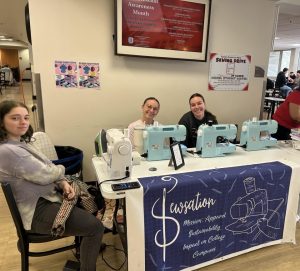

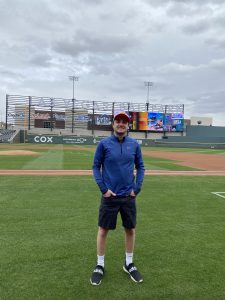
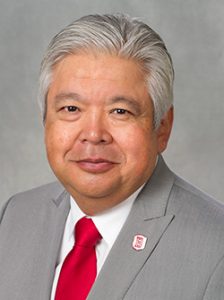
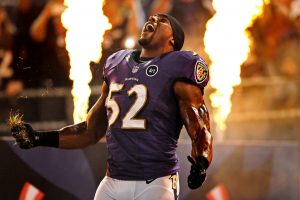
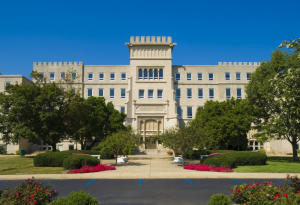
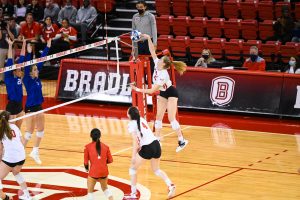
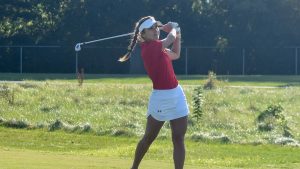
The intersection is indeed beautifully designed but it was not the right fit for Main and University where 23,000 cars a day traversed to points north and south in Peoria including functions at the University itself. It developed a bottle neck that wasn’t necessary for safety of both pedestrians and traffic. The intersection did indeed need new and a bit wider sidewalks but there were no deaths related to this intersection from crossing the street. Simply enforcing the speed laws and traffic laws would have done the same and saved millions. Please, don’t say that police resources would have been over used because AFTER the intersection was completed, over 600 tickets were written in the Uplands and on Moss for speeding (20 mph, bicycles pass you) and stop sign violations. Some people were simply stopped and equation on why they were cutting through the neighborhood. Since when did we become Russia? These are public streets supported by all taxpayers. This intersection was done simply to satisfy the egos of a few city leaders and movers and so called shakers at the expense of everyone else. Businesses are suffering, as is mass transit, Peoria Charter Coach, emergency response vehicles, and just plain people who have to commute (yes we still use cars) to work and are either forced miles out of their way or have to wait at a mind numbing intersection that has been reduced to basically an alley.
What is the journalism department at Bradley teaching these days? Online, non-scientific polls are great for entertainment value, but should never be the basis of a hard news story because they’re meaningless. As they teach in COM 400, the respondents are self-selected and the results only reflect the sample, not the population as a whole. This pseudo-poll should never have been the basis of a newspaper story.
As for Mr. Emert’s comment above, he’s welcome to his own cynical opinions, but not to his own facts. This intersection was a collaboration between the city and the stakeholders in the area. There were multiple public meetings including business owners, residents, and other interested individuals and organizations. Even Mr. Emert could have participated. There is also no data showing that “businesses are suffering, as is mass transit, Peoria Charter Coach, emergency response vehicles, and just plain people who have to commute.”
I’d say C.J.’s comments pretty much hit the nail on the head. The design and execution of the infrastructure redesign throughout the West Bluff (not only Main & University) were not done in a vacuum. There were months of planning involving City Staff, nearby businesses, Bradley representatives, neighborhood associations, and local residents. The result is not a perfect solution, since a perfect solution does not exist. However, I believe it’s the best solution we could have hoped for given the unique constraints of the physical space, existing infrastructure layout, project budget, etc, etc…
Well you can sure tell the people who live in the Uplands. First, this intersection was done under the guise of collaboration, which was mostly a few (when compared to everyone else in this city) residents of the Uplands and yes, some businesses but you can count those businesses on one hand. I know for a fact, one business owner has suffered loses and was set against this intersection but no matter as it was a done deal from the git go. No businesses,o there than Illinois American Water Co put any money into this intersection. It was done with TAXPAYER money. Sadly many many people do not go to these meetings and get involved like they should but in this case, that is exactly what was expected. No participation from the public as a whole. If the Scout’s survey have gone the other way, well all we would hear is how wonderful the Uplands feels about it. This intersection was never about safety. It was about egos of the few at the expense of everyone and a chance water main break afforded the opportunity to ram it down our throats. If it was about safety, then why aren’t the police, who wrote motorists over 600 tickets in that area, writing tickets to people who cross against the light now? I’m all for improvement city wide as it benefits everyone of us but many many neighborhoods are waiting for improvements and have been promised for years, nay, decades for action. Yet, we see a city response to ONE neighborhood at the speed of light. Why? Because some of the biggest movers in this city live in that neighborhood. Making areas safe is one thing, but to disrupt the lives of people who still have to use cars to commute and then restrict that commute through one of the top 5 busiest intersections in the city because a few people want to walk to the bar, is well, idiotic to say the least. Many, like me, have to go some miles out of our way to avoid this mess and yes Peoria Charter Coach has directed their drivers around the area and so has other businesses. Many mass transit drivers report delays in their schedules because of this. And the paper of record printed accounts of emergency vehicles having trouble getting through. As always though with the Uplands, if you don’t like it, then tough, find another way. Well, I don’t like it and I avoid all businesses in that area now. I am not alone doing this. This is what happens when you turn a thorough fare that handled 20,000+ cars a day into basically an alley. Accidents are happening there and sadly I believe it will be the scene of a pedestrian injury or death before next spring. The winter will tell the tale.
C.J. the point is, it’s just not a good setup! Anyone who drives through this intersection can see this as they experience it first hand. Creating big city traffic delays in Peoria and overreacting to a situation by dropping a design into an intersection that is too busy to handle it were all the wrong decisions, no matter how many people were involved in the planning process. I am still waiting for someone to just come out and say IT DIDN’T WORK with this project. Just hearing that would make me feel better. It is great to think outside the box but forcing something like this is not the answer. It’s a nightmare, for drivers and pedestrians too because wait times to walk across are much longer than before. I walk this intersection regularly so I know. This intersection’s current setup is just wrong for numerous reasons and if it didn’t cost so much to do it, should be changed back to the way it was. Make it an all way crossing if you have to but there is no reason or need to take out lanes to do that. I now avoid it and the businesses near it whenever possible. And I like most of the businesses there. The whole thing is a big mess that never had to be one in the first place.